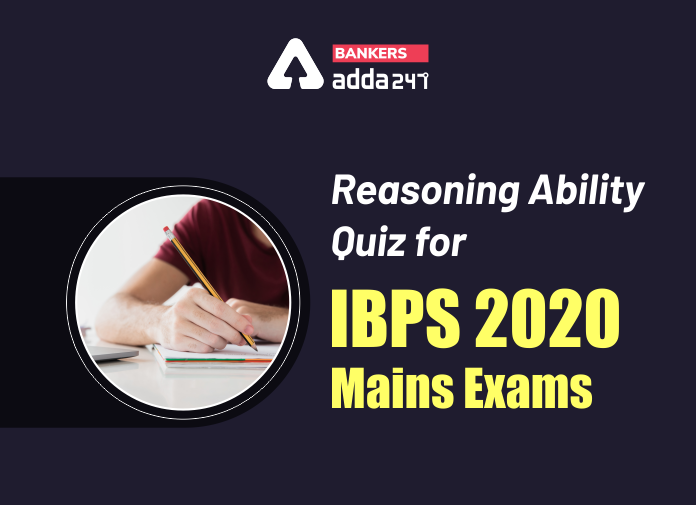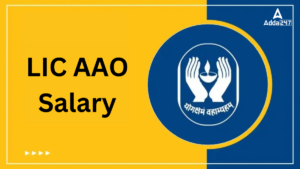Table of Contents
Directions (1-5): Study the following information carefully to answer the given questions.
Eight persons i.e. A, B, C, P, Q, R, S and T are sitting in two parallel rows such that A, P, R and T are sitting in row 1 and all are facing in south direction and B, C, Q and S are sitting in the row 2 and they are faces in north direction. Person sitting in the row 1 faces the person sitting in row 2. They all are born in different years i.e. 1982, 1985, 1987, 1989, 1991, 1993, 1995 and 1999 in same date and same month (the base year is taken as 2019). All the information is not necessarily in the same order.
S sits second to the right of the one who is two years older than T. T was born after 1993. Q faces the one who sits second to the left of the one who is second oldest. The difference between the ages of Q and R is an odd number but less than 5. No one sits between R and P. P doesn’t sits at the extreme end. The age of Q is a prime number. The one who is youngest faces the one who sits at the immediate right of the person whose age is multiple of 5. B is the only neighbour of C. T doesn’t face Q and S. Sum of the digits of the A’s age is 5. The one who is 20 years old faces south.
Q1. Who among the following sits second to the left of the one who was born in 1995?
(a) Immediate neighbour of C
(b) A
(c) The one who was born in 1999
(d) S
(e) None of these
Q2. Which among the following statement is not true?
(a) T faces north
(b) S and Q are immediate neighbors
(c) B was older than S
(d) Q sits at one of the extreme ends
(e) All are true
Q3. How many persons are younger than A?
(a) Three
(b) One
(c) Four
(d) Five
(e) None
Q4. Four of the following are alike in a certain way so form a group, which of the following does not belong to that group?
(a)B
(b)Q
(c)T
(d)R
(e)S
Q5. What is the sum of the ages of the persons who sit at the extreme ends of the row 1?
(a)56
(b)55
(c)45
(d)51
(e)None of these
Directions (6-7): Study the following information carefully to answer the given questions:
Pollution control can no longer be viewed as a national problem to be addressed by individual countries on the basis of national sovereignty. As the international effects of the Chernobyl nuclear accident make clear, pollutants do not respect political boundaries; thus, every nation has a legitimate stake in the environmental practices and policies of its neighbours.
Q6. Which of the following would be the most logical continuation of the argument above?
(a)So, growth of the nuclear power industry should be halted until more rigorous safety procedures have been developed.
(b)Hence, attempts made by one nation to impose its environmental policies on another should be resisted-if necessary, by force.
(c)Consequently, issues of pollution should be handled by an international commission with the authority to set policies for all nations.
(d)Thus, every nation should pledge itself to environmental policies that will minimize the danger to its neighbours.
(e)As a result,only the ultimate emergence of a sovereign world government will resolve today’s most pressing environmental dilemmas.
Q7. Which of the following, if true, most strongly supports the view expressed in the passage?
(a)Acid rain from factories in the mid-western United States pollutes lakes in Canada.
(b)Soviet leaders refused western reporters access to safety records after the Chernobyl accident.
(c)Neighboring states within the United States are often unable to agree on joint pollution control efforts.
(d)Existing international bodies have no authority to impose pollution control regulations on member-nations.
(e)Fishers form Japanese fleets have increasingly depleted fish supplies in United States’ territorial waters.
Q8. Statement: Despite strong opposition, the controversial Prohibition of Forcible Conversion of Religion Bill was passed by the Tamil Nadu Assembly with the AIDMK and the BJP outvoting the combined opposition of the DMK, the Congress, the TMC and the Left parties. –A news
Assumptions: I. Conversion creates resentment among several sections and also inflames religious passions, leading to communal clashes.
II. Conversions only lead to the isolation of the converted.
III. Strong opposition has put hindrance before a bill in taking final shape.
(a) All I, II & III
(b) Only I & II
(c) Only I & III
(d) Only II & III
(e) None of these
Directions (9-11): Study the information carefully answers the questions given below.
α means either hour hand or minute hand is at 7
∞ means either hour hand or minute hand is at 10
© means either hour hand or minute hand is at 8
β means either hour hand or minute hand is at 12
® means either hour hand or minute hand is at 3
µ means either hour hand or minute hand is at 5
Note: if two symbols are given then by default first symbol is consider as hour hand and second symbol is consider as minute hand.
Q9. A person takes 130 minutes to reach office from his home and he started at α® but on the way to his office he met his friend and reached office 35 minutes late. So, at what time he reached office?
(a)µβ
(b)∞β
(c)®©
(d)©β
(e)None of these
Q10. A train leaves from Pune station to Mumbai at ®®. Usually it takes µβ hours to reach Mumbai but it halts at some station for 1hour 45 minutes. So, at what time it reaches to Mumbai?
(a) αβ
(b)None of these
(c)®©
(d)©β
(e) ∞β
Q11. One day Abha and Sabha plans to go for shopping at ©® and returned at their home after shopping at ©®. So, how much time they spend in shopping if they go for shopping in the morning and returned at home in evening?
(a)ββ
(b)©β
(c)®µ
(d) ∞β
(e) None of these
Q12. In which of the following expressions does the expression ‘K>A’ and ‘Q<M’ is true?
(a) P = Q > R ≥ K < S > M ≤ N > A
(b) A > S = E < Q ≥ B < M = K ≤ D
(c) A < O > Q < H > M ≥ S ≥ B ≤K
(d) M ≥ T > J ≥ A = Q ≤ V = L < K
(e) None of these
Directions (13-14): Study the following information carefully to answer the given questions.
A@B means A is child of B
A$ B means A is parent of B
A#B means A is sibling of B
A % B means A is spouse of B
A&B means A is grandparent of B
+A/+B represents the male member of the family
-A/-B represents the female member of the family
Q13. If the statements “(+)P@S $Q@(-)T&(-)U ; (-)V#U@(+)R%Q” holds true, then how is S related to R?
(a) Father in law
(b) Mother in law
(c) Father
(d) Mother
(e) Sister
Q14. If the statements “(+)P@S $Q@(-)T&(-)U ; (-)V#U@(+)R%Q” holds true, and S’s age is twice of T’s age , then how many members are younger than S?
(a) Three
(b) Five
(c) Six
(d) Four
(e) None of these
Q15. Which of the following symbols should replace the sign ($) and (#) in the given expression in order to make the expressions B ≥ G and F > K definitely true?
‘A > B $ C ≥ F = G > H # O ≥ K ≤ E < R > T’
(a) ≥, <
(b) ≥, ≤
(c) >, =
(d) =, ≥
(e) <, ≤
Practice More Questions of Reasoning for Competitive Exams:
Solutions

S6. Ans.(c)
Sol. The argument is leading up to call for some sort of international agency to control pollution, which, as the author claims, is an international problem. Thus (c) is the best response.
S7. Ans.(a)
Sol. The author cite one example of international pollution, so another example would help strengthen his claim. (a) provides such an example.
S8. Ans.(c)
Sol. III is implicit. Note that the statement is a piece of news. What the journalist assumes about the conversion and its impact can’t be explicitly said. But the words “despite strong opposition” indicate that the journalist must be assuming III. I also follows as it is given that despite strong opposition, the controversial prohibition of forcible conversion of regional bill was passed by Tamil Nadu assembly.
S9. Ans.(b)
Sol. A person takes 130 minutes to reach office from his home which means takes 2hr10min and he started at α® which means at 7:15. So, he reaches office at 9:25 but on the way to his office he met his friend and reached office 35 minutes late so, he reaches office at 10:00 i.e. ∞β.
S10. Ans.(e)
Sol. A train leaves from Pune station to Mumbai at ®® which means at 3:15. Usually it takes µβ to reach Mumbai which means it takes 5 hours to reach Mumbai. So, the time it reaches to Mumbai is 8:15 i.e. but it halts at some station for 1hour 45 minutes. So, at 10:00 i.e. ∞β it reaches to Mumbai.
S11. Ans.(a)
Sol. Abha and Sabha plans to go for shopping at ©® i.e. 8:15 and returned at their home after shopping at ©® i.e. 8:15. So 12:00 hours they spend in shopping if they go for shopping in the morning and returned at home in evening.
S12. Ans.(d)

Practice with Crash Course and Online Test Series for IBPS Mains 2020:
- IBPS RRB PO and Clerk Prime 2020-21 Online Test Series
- IBPS PO Online test series (Prelims + Mains) 2020 by Adda247
- IBPS KA MAHAPACK Online Live Classes
Click Here to Register for Bank Exams 2020 Preparation Material




 GA Capsule for SBI Clerk Mains 2025, Dow...
GA Capsule for SBI Clerk Mains 2025, Dow...
 The Hindu Review October 2022: Download ...
The Hindu Review October 2022: Download ...
 LIC AAO Salary 2025, Revised Structure, ...
LIC AAO Salary 2025, Revised Structure, ...





